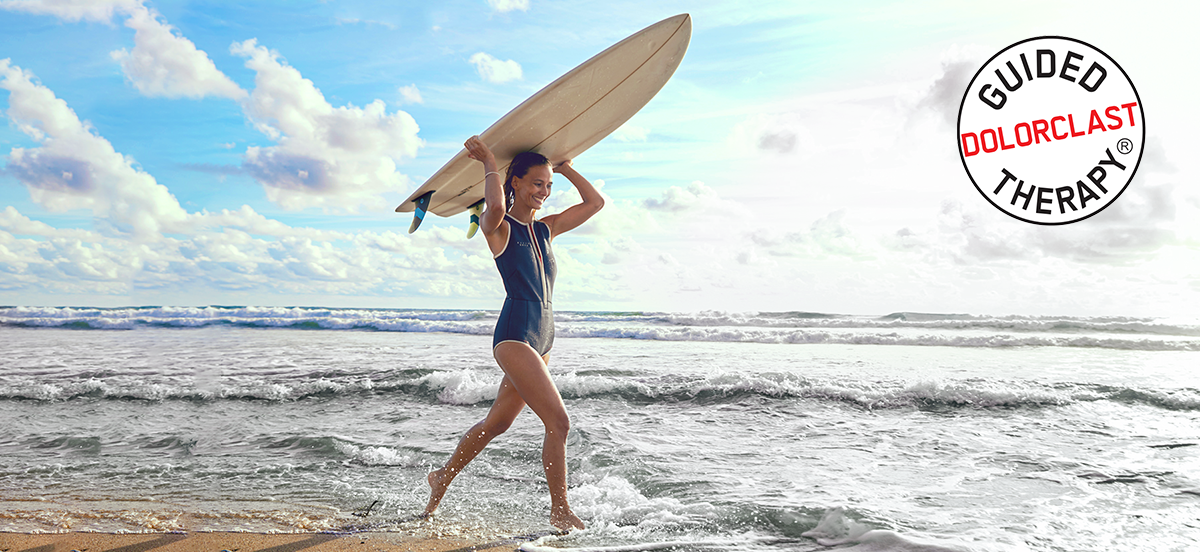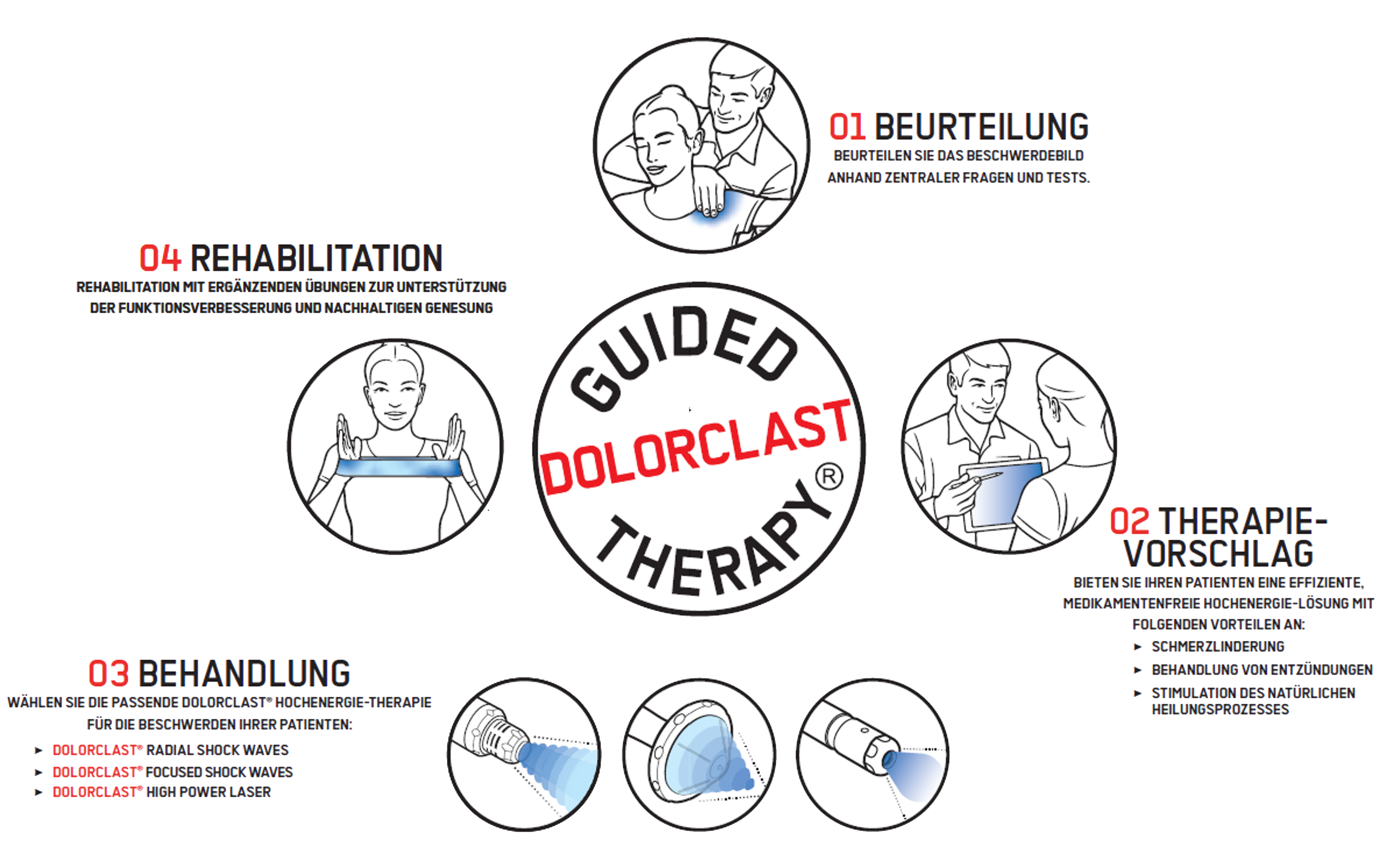
Guided DolorClast® Therapy
Erschließen Sie Ihr Heilungspotenzial
Die natürliche Heilung wird durch biologische Wechselwirkungen zwischen Schmerz- und Entzündungsmechanismen blockiert. Guided DolorClast® Therapy behandelt schnell und effizient Schmerzen und Entzündungen, ob akut oder chronisch. Sie setzt die Selbstheilungskräfte des Körpers frei und aktiviert spezifische Heilungsmechanismen. Die Guided DolorClast® Therapy bringt Patienten in Bewegung und führt sie innerhalb weniger Wochen erfolgreich zur Genesung.

Was ist die Guided DolorClast® Therapy?
Entdecken Sie die Guided DolorClast® Therapie: eine evidenzbasierte klinische Anwendung von Hochenergie-Therapien, die auf die Ursache von Schmerzen und Entzündungen abzielen, um die Selbstheilung zu fördern.
Die Guided DolorClast® Therapie bietet nicht-invasive, schnelle und wirksame Lösungen für die Behandlung akuter und chronischer muskuloskelettaler Erkrankungen dar.

SCHMERZEN LINDERN
- Überwältigt die C-Nervenfasern, um die Freisetzung von Substanz P zu hemmen, die für die Verstärkung von Schmerzsignalen verantwortlich ist
- Hemmt sensorische Neuronen an Nervenenden, um Schmerzsignale an das zentrale Nervensystem zu unterdrücken
- Die starke schmerzstillende Wirkung setzt bereits nach 5 Minuten Behandlung ein
ENTZÜNDUNG BEHANDELN
- Verringert die Freisetzung von Substanz P, wodurch die neurogene Entzündung gehemmt und die Skleraxis-Expression ermöglicht wird.
- Verringert die Menge an Prostaglandin E2 (PEG2), das für die Vermittlung akuter Entzündungen verantwortlich ist, und ahmt die Wirkung nichtsteroidaler entzündungshemmender Medikamente (NSAIDs) ohne Nebenwirkungen nach.
- Schnelle entzündungshemmende Wirkung, die den Weg zur Heilung ebnet.
STIMULIERT DIE NATÜRLICHE HEILUNG
- Verbessert die Angiogenese, die Blutzirkulation und den Blutdruck.
- Aktiviert die Reparatur von beschädigten Muskelfasern.
- Stimuliert den Umbau der Sehnen und hilft, die erosive Abnutzung zu verringern.
- Verringert den Knorpelabbau und stimuliert die Knorpelreparatur.
- Stimuliert die Knochenheilung.
- Fördert die Regeneration von Muskeln, Sehnen, Knorpeln und Knochen.
Applications
Die Guided DolorClast® Therapy behandelt multiple muskuloskelettale, neurologische und vaskuläre Anwendungen.
Leidet Ihr Patient unter einer dieser Bedingungen?
- Rückenschmerzen
- Tendinopathie
- Arthrose
- Enthesopathie
- Fasziopathie
- Myofasziales Schmerzsyndrom
- Verkalkung
- Verzögerte oder nicht-heilende Fraktur
- Spastizität
- Erektile Dysfunktion
